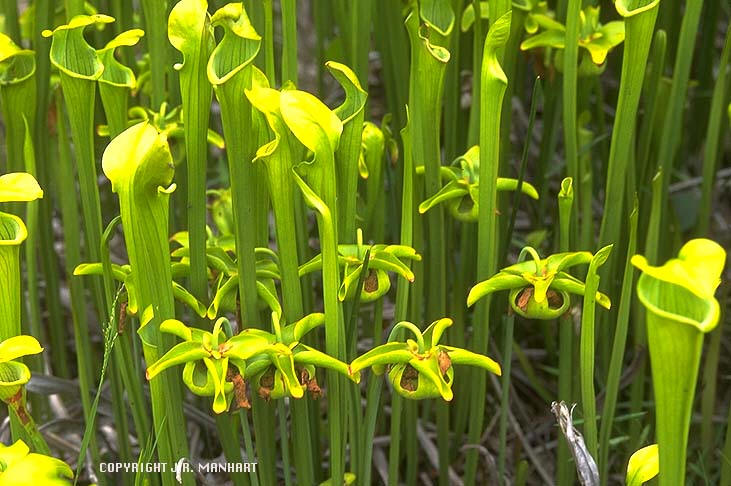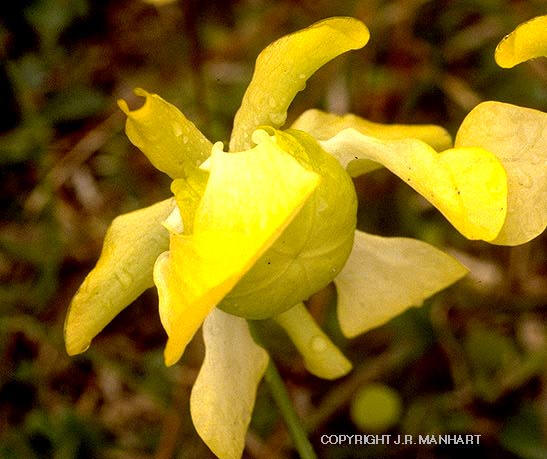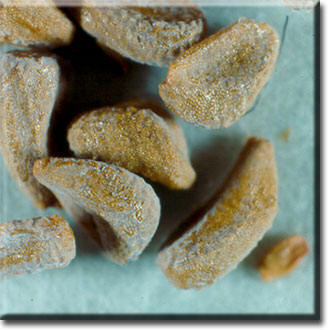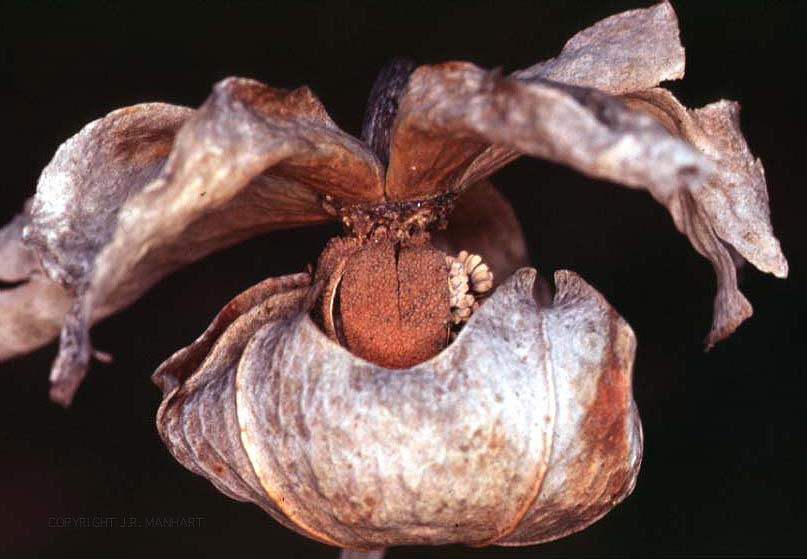|
|
|
|
|
 |
|
|
|
|
|
|
|
Reproduction |
|
|
|
|
Asexual:
 Sarracenia
alata has the ability to grow a complete and fully functional adult from any
piece of itself as long as there is rhizome attached (totipotent). This
is one way that this plant can spread. The new plant would have the same
genetic makeup as the parent that gave rise to it. Another way that these
plants reproduce asexually is when some of the rhizome is pinched off.
This happens when some of the rhizome dies and it separates two living halves.
Both these halves can give rise to new pitcher plants as long as conditions are
favorable.
Sarracenia
alata has the ability to grow a complete and fully functional adult from any
piece of itself as long as there is rhizome attached (totipotent). This
is one way that this plant can spread. The new plant would have the same
genetic makeup as the parent that gave rise to it. Another way that these
plants reproduce asexually is when some of the rhizome is pinched off.
This happens when some of the rhizome dies and it separates two living halves.
Both these halves can give rise to new pitcher plants as long as conditions are
favorable.
Sexual:
The Sarracenia alata is a perennial
that typically flowers through March and April. The flowers of the pale
pitcher plant are typically yellow in color and there is one flower per stalk.
Their petals hang downward as opposed to opening upward (as shown in the picture
to the right). Once the flower is formed,
 several
insects, mostly bees as they are attracted to the color yellow, pollinate the
flower. Once pollinated the plant produces a fruit. The fruit
becomes dry at maturity and all the seeds held within are dispersed through the
slits that open. The exact form of dispersal used by the Sarracenia
alata is not really know, but the best educated guess right now is that the
wind disperses the seeds.
several
insects, mostly bees as they are attracted to the color yellow, pollinate the
flower. Once pollinated the plant produces a fruit. The fruit
becomes dry at maturity and all the seeds held within are dispersed through the
slits that open. The exact form of dispersal used by the Sarracenia
alata is not really know, but the best educated guess right now is that the
wind disperses the seeds.
 Once
the seed lands in a new location it begins to germinate. Then it grows
until it reaches maturity and begins to flower and produce its own seeds.
Ironically one of the key elements that aid in the propagation of new plants
also becomes ita prey. After the insect or bee has pollinated the
flower, the flower disperses its seeds and releases its fruit. Then it
begins to feed on insects once again. The same insect that helped it
reproduce could later become its dinner, what a relationship!
Once
the seed lands in a new location it begins to germinate. Then it grows
until it reaches maturity and begins to flower and produce its own seeds.
Ironically one of the key elements that aid in the propagation of new plants
also becomes ita prey. After the insect or bee has pollinated the
flower, the flower disperses its seeds and releases its fruit. Then it
begins to feed on insects once again. The same insect that helped it
reproduce could later become its dinner, what a relationship!
|
|
|
|
|
|
||